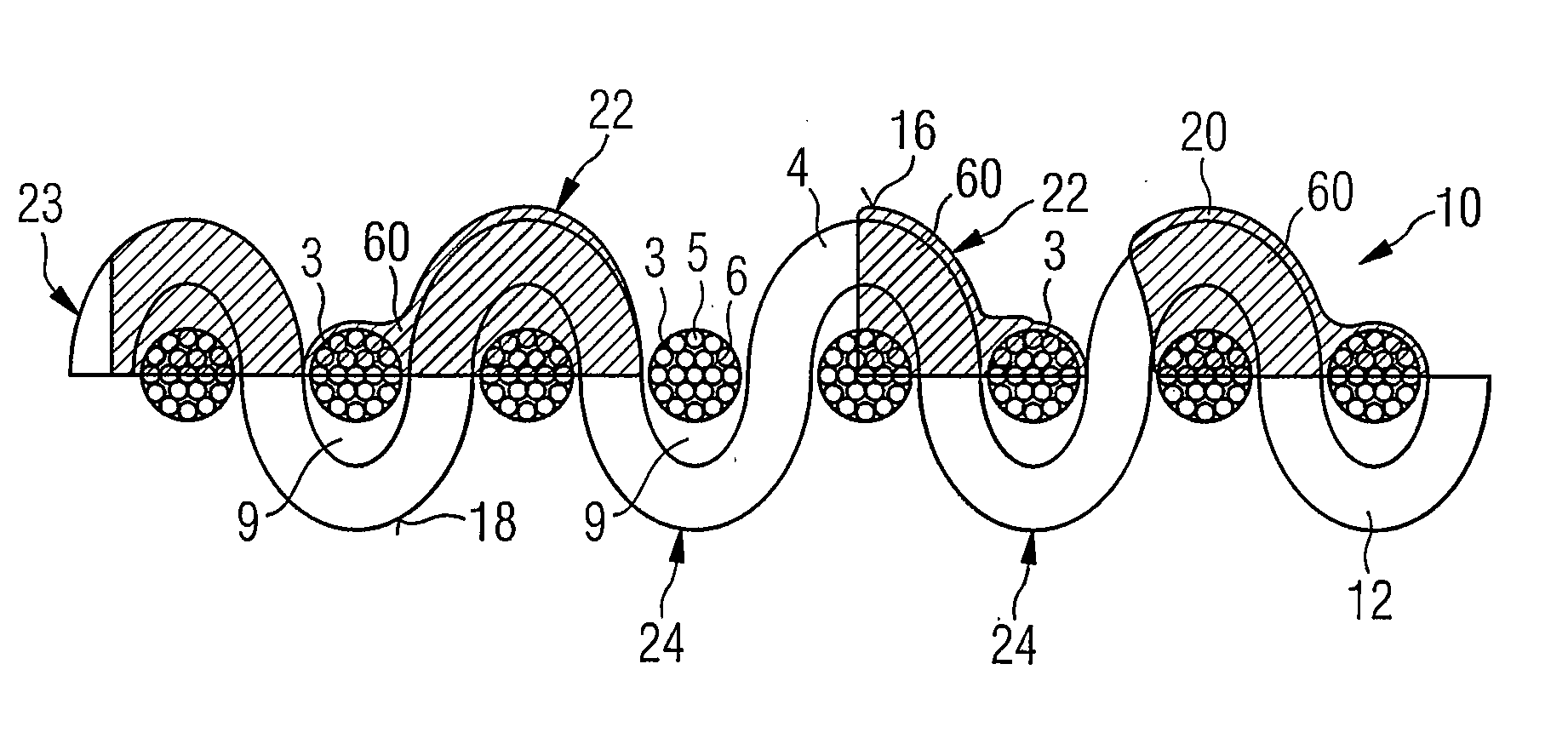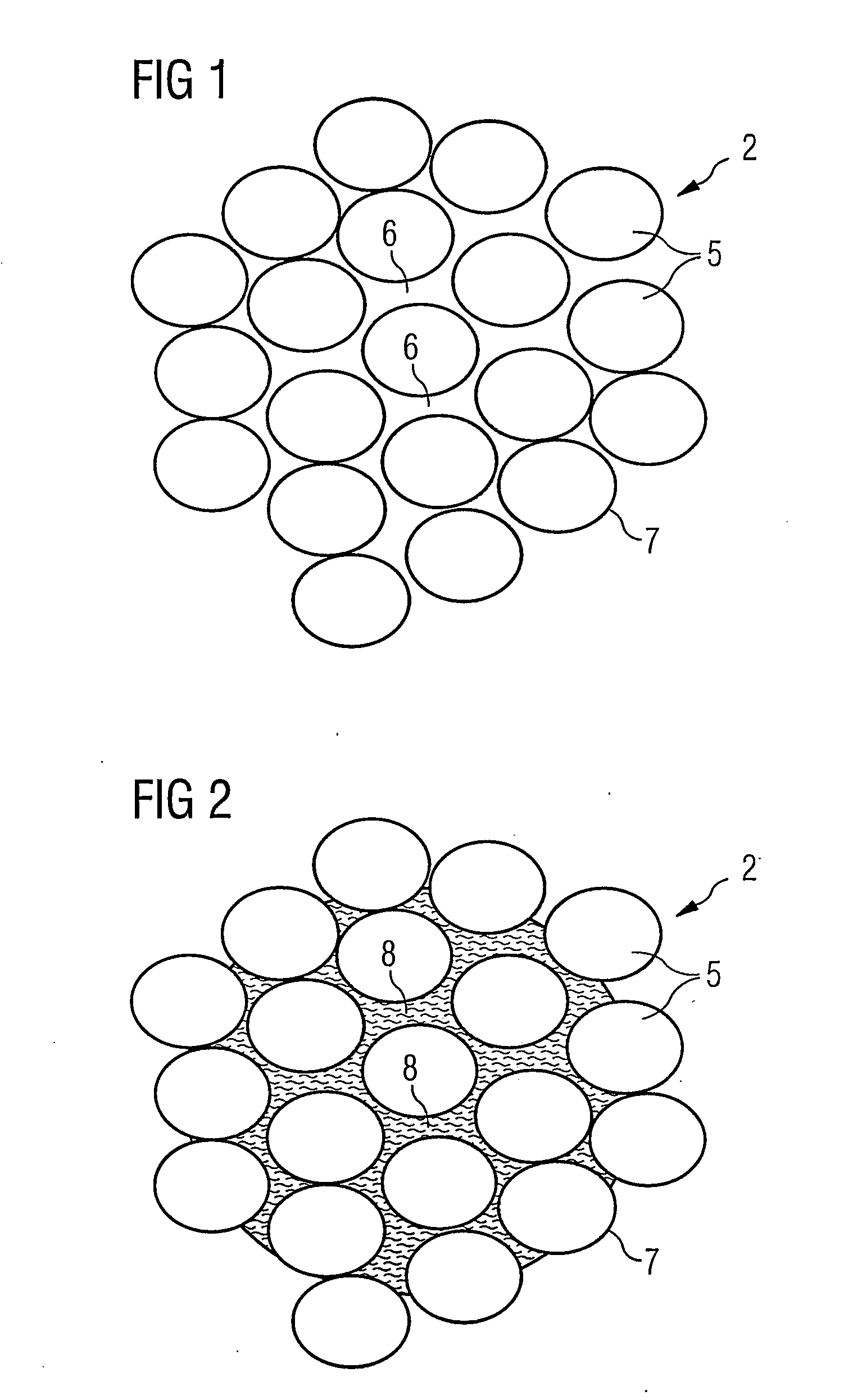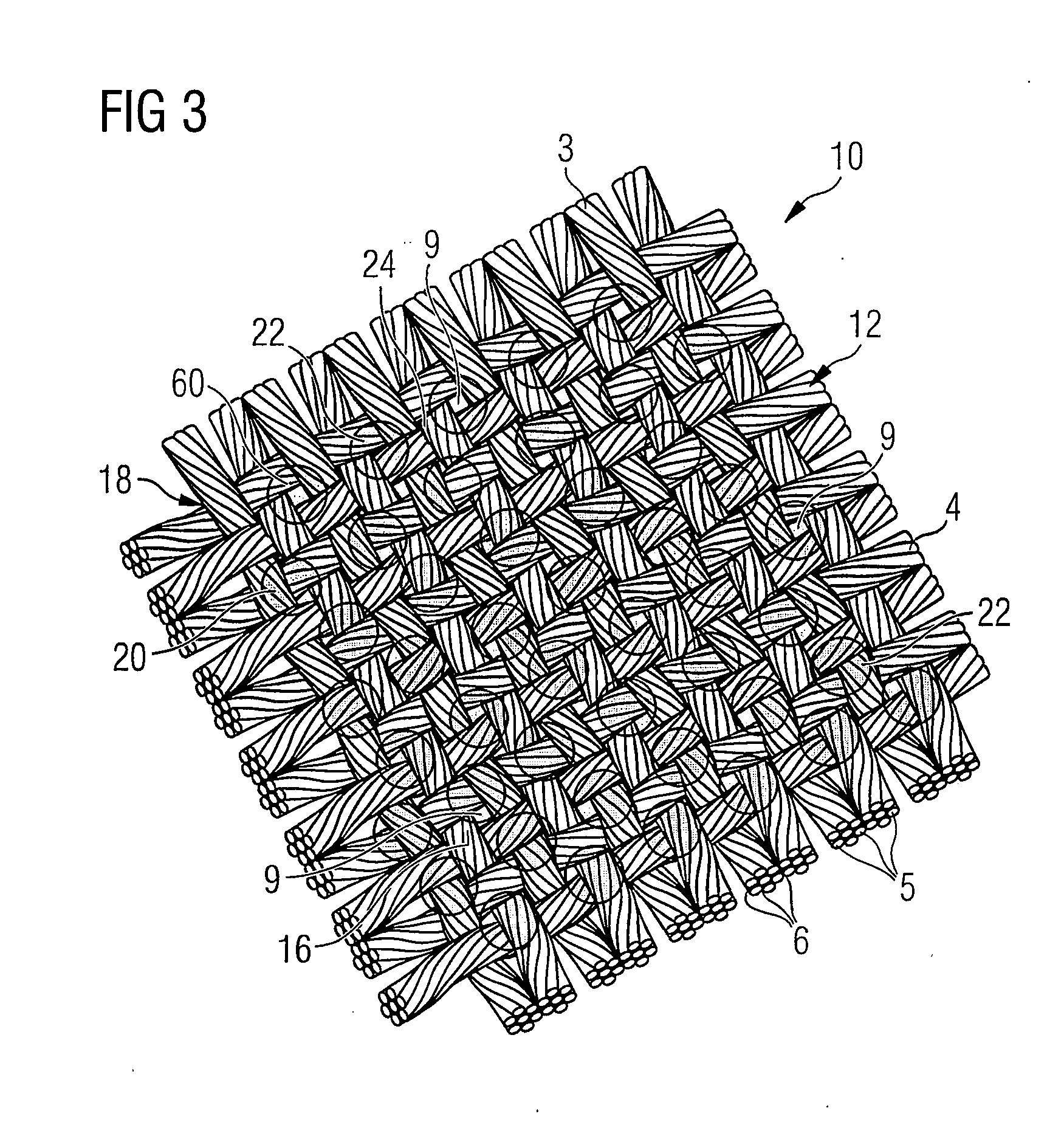Textile Composite Article
a composite article and material technology, applied in the field of textile composite articles, can solve the problems of textiles with such an open construction, short service life, wet textiles, etc., and achieve the effects of no sticky touch, firm grip, and good feel
- Summary
- Abstract
- Description
- Claims
- Application Information
AI Technical Summary
Benefits of technology
Problems solved by technology
Method used
Image
Examples
composite example 1
Textile Composite Example 1
[0170]A first outer dense textile made of 65% polyester (PES) yarn and 35% cotton yarn is used. The dense textile is a woven textile made of a spun yarn Nm 64 / 2. The yarn is not pre-treated. The textile has a weight of 180 g / m2. The average size of the interstices between the yarns is about 50 μm measured within 1 cm2. Such a dense woven textile is available from the company Ibena Textilwerke GmbH, Germany.
[0171]The inner surface of the dense textile was impregnated with an impregnating material IM2 by continuous rotation screen printing technique in such a manner as to provide a discontinuous cross pattern (curing at about 150° C. for about 1 minute). The screen has a pattern of separate discrete crosses with a thickness of 120 μm.
[0172]The textile weight after the treatment was 245 g / m2, therefore the amount of IM2 is about 65 g / m2, this is about 36.1% of the textile weight.
[0173]Samples of example 1 were tested for air- and water vapor permeability and ...
composite example 3
Textile Composite Example 3
[0180]A textile composite was made using a first dense face textile made of 100% polyamide (PA) Taslite twill yarn. The first textile is a woven textile made of a yarn (dtex 78f34). The yarn is not pre-treated. The first textile has a weight of 100 g / m2. The average size of the interstices between the yarns is about 40 μm measured within 1 cm2. Such a woven dense textile is available from the company Ibena Textilwerke GmbH, Germany. The first dense textile is attached to a second backer textile. The first textile forms a face and the second textile forms a backing. The second backer textile is made of 65% polyester (PES) yarn and 35% cotton yarn is used. The second textile is a knitted textile made of spun yarns Nm50 / 1. The yarn is not pre-treated. The second textile has a weight of 95 g / m2. Such a knitted textile is available from the company Riedel+Tietz Textil GmbH&Co, Germany. The second textile was arranged to the inner side of the first textile to fo...
composite example 4
Textile Composite Example 4
[0181]A two layer textile composite was made substantially according to example 3 but bonded together by the impregnating material blend IMB1. The two layer textile composite laminate was constructed by printing a discontinuous pattern of the impregnating material blend IMB1 onto the inner surface of the first face textile and then adhere the second backer textile to the first face textile between two rollers with a gap of 0.4 mm. The discontinuous pattern of IMB1 was printed by continuous rotation screen printing technique in such a manner as to provide a discontinuous dot pattern. The screen has a pattern of separate discrete dots with a diameter of 2.3 mm and a thickness of 120 μm. The resultant textile composite was a two layer textile laminate of an outer meltable polyamide dense textile and a thermally stable backer textile bonded by a discontinuous pattern of dots of IMB1 with a laminate weight of 261 g / m2. The amount of IMB1 is about 79 g, therefor...
PUM
| Property | Measurement | Unit |
|---|---|---|
| water absorption | aaaaa | aaaaa |
| size | aaaaa | aaaaa |
| width | aaaaa | aaaaa |
Abstract
Description
Claims
Application Information
 Login to View More
Login to View More - R&D
- Intellectual Property
- Life Sciences
- Materials
- Tech Scout
- Unparalleled Data Quality
- Higher Quality Content
- 60% Fewer Hallucinations
Browse by: Latest US Patents, China's latest patents, Technical Efficacy Thesaurus, Application Domain, Technology Topic, Popular Technical Reports.
© 2025 PatSnap. All rights reserved.Legal|Privacy policy|Modern Slavery Act Transparency Statement|Sitemap|About US| Contact US: help@patsnap.com



